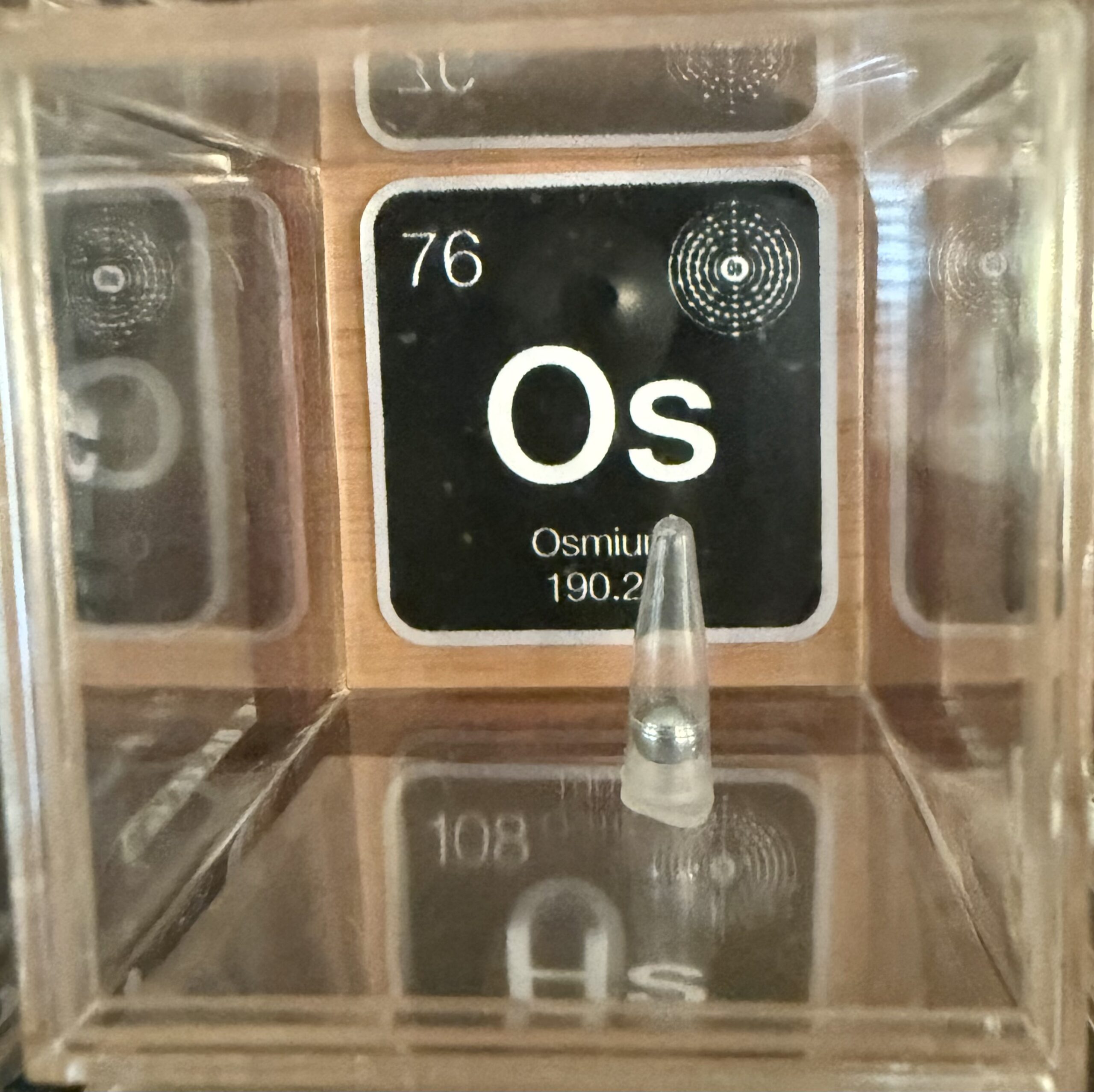Atomic Number: 76
Atomic Mass: 190.23

In the world of metals, one stands out for its density, rarity, and unique properties: osmium. First discovered in 1803 by the English chemist Smithson Tennant, this remarkable element has found its place not only in the periodic table but also in modern industry and technology. Its fascinating journey from discovery to modern-day applications offers a glimpse into the evolving relationship between science and society.
Discovery of Osmium: A Story of Curiosity and Ingenuity
In the early 19th century, Smithson Tennant and his colleagues were experimenting with platinum ores, a challenge for scientists at the time. They noticed that some materials were resistant to acid treatments, which was intriguing. In London, Tennant managed to isolate two elements from this stubborn residue: osmium and iridium. Osmium got its name from the Greek word osme, meaning “smell,” due to the pungent odor of its volatile oxide.
Tennant’s discovery laid the groundwork for exploring osmium’s unique properties, many of which are still being studied and utilized today. Interestingly, iridium, which was discovered alongside osmium, shares some similar characteristics, such as high density and corrosion resistance, but their applications differ significantly in modern contexts.
A Metal with Surprising Applications
In the modern world, osmium is still considered one of the rarest and densest elements on Earth. Despite its scarcity, it plays an important role in several high-tech applications. One of its primary uses is in the production of hard alloys. When mixed with other metals like platinum or iridium, osmium enhances their strength and durability. This makes it ideal for use in extreme environments, such as those faced by aerospace or scientific equipment.
In addition, osmium is used in the production of electrical contacts and fountain pen nibs. Its high melting point and resistance to wear make it a perfect choice for parts that need to endure constant friction and exposure to high temperatures.
Another application involves osmium tetroxide, a compound used in microscopy. In biology, this compound is instrumental in staining tissues, making cellular structures more visible under electron microscopes. The compound’s ability to bind to fatty tissues allows researchers to see intricate biological details with greater clarity.
Beyond Osmium: The Importance of Alloys and Elemental Interaction
While osmium itself is valuable, its true power often lies in its interactions with other elements. For instance, when alloyed with platinum, it creates some of the hardest, most durable materials available, perfect for scientific instruments, surgical implants, and even some jewelry. This is similar to how iron and carbon come together to form steel, a material much more useful and versatile than iron alone.
Osmium’s unique properties, combined with the creativity of scientists and engineers, continue to push the boundaries of what’s possible in material science. While its uses may be niche compared to more common metals like copper or iron, its contributions to technology and industry are invaluable.
Conclusion
Osmium’s discovery over 200 years ago may have been a scientific curiosity at first, but its modern applications have cemented it as an indispensable part of modern material science. From improving the strength of alloys to helping scientists peer into the microscopic world, this rare and dense element continues to make its mark. Its unique properties, especially when combined with other elements like platinum, highlight the importance of collaboration in the natural world—and in human innovation.
Tennant’s work in 1803 opened the door to exploring this metal’s potential, and today, osmium remains a testament to the ongoing curiosity and ingenuity that drive scientific discovery.
 using WordPress and
using WordPress and
Comments are closed